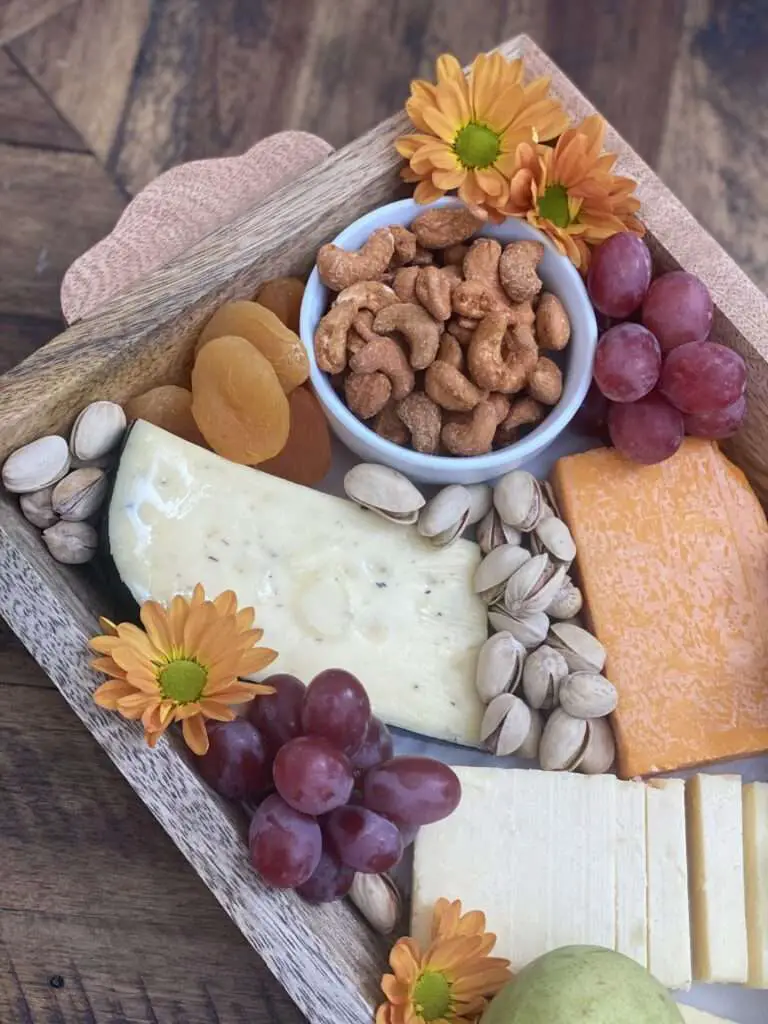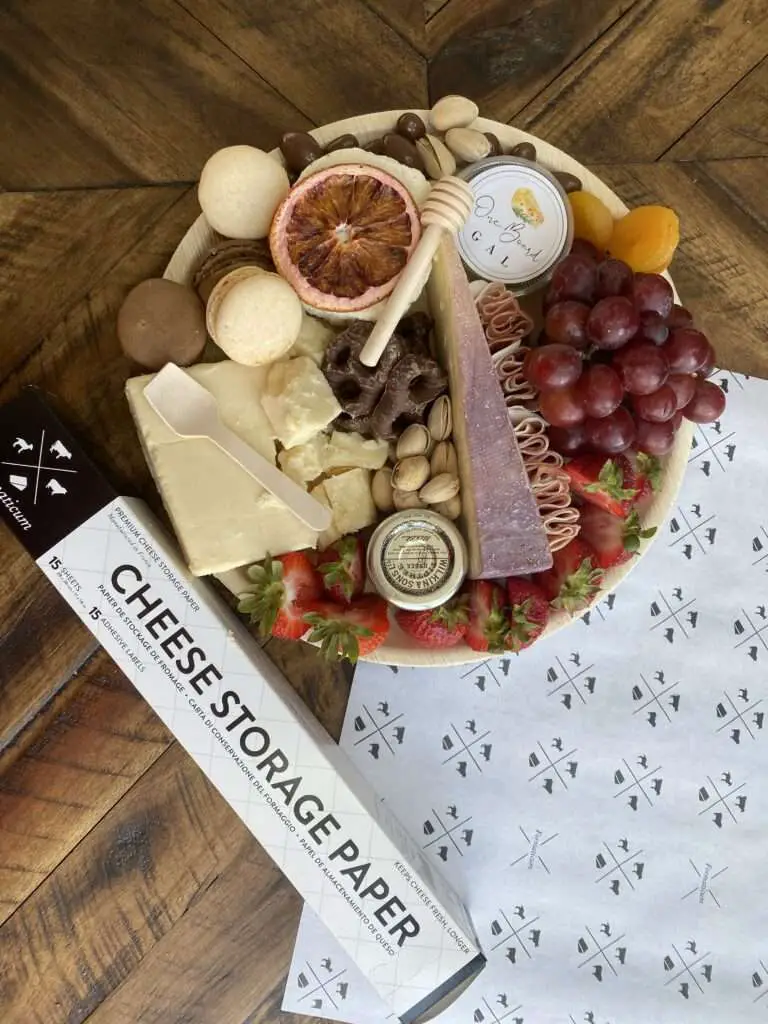If you’re a foodie, chances are you’ve recently seen a growing trend on your social media platforms filling your phone with beautiful charcuterie boards. These visually stunning boards are usually overflowing with meats, cheeses, crackers, and fruit, and they make for an impressive and delicious spread. But where did this trend come from? And what’s the best way to assemble your own charcuterie board?
What is the Charcuterie Board Trend?
Keep reading to find out everything you need to know about this mouthwatering trend.

The Origins of Charcuterie Boards
Charcuterie boards hold their origins in France, where they were originally known as “charcuteries de table.” These were large platters of cured meats that were served as part of a larger meal. This style of cuisine first started popping up in France in the Middle Ages as a way to preserve meat before the invention of refrigeration. The tradition of serving cured meats dates back to the Roman Empire, but it was in France that charcuterie became an art form. French charcutiers (meat processors and curers) developed a wide variety of cured meats, each with its own unique flavor and texture.
The traditional French charcuterie board would feature ham, sausage, pate, and rillettes (a type of pate made with shredded meat), along with pickled vegetables and baguettes. This tradition eventually made its way across the Atlantic to the United States, where it was embraced by both home cooks and professional chefs alike.
The Modern Charcuterie Board
Charcuterie boards have recently become a popular appetizer or main course at restaurants and dinner parties. They are the perfect way to showcase a variety of meats, cheeses, and other accompaniments. The modern build of Charcuterie boards are essentially curated selections of various meats and cheeses that are served cold (or at room temperature). These boards typically also include an assortment of crackers or breads, several selections of fruit, and some type of condiment or pickled element (such as mustard, olives, or pickled jams).
After Charcuterie boards became popularized in restaurants, fans of this beautifully presented meal began to make them in their own kitchens. What better food to set out to impress and feed your guests a dish that gives so many options and endless possibilities? Setting out a board is also a fantastic dish to ensure multiple dietary restrictions can be catered to.
Now that you know what charcuterie is, it’s time to learn how to make a perfect charcuterie board! When it comes to charcuterie boards, there are no hard and fast rules. You can easily get creative with your meat, cheese, and accompaniment selections. However, there are a few general tips you can follow to ensure your board is both beautiful and delicious.
Picking the ingredients for your charcuterie board when you’re planning a party or occasion at home is even more important! While it can seem intimidating at first, shopping around a store or your local butcher shop can be a blast when you embrace getting creative. We’re here to show you how!

Helpful Tips for Your Boards
1) Maintain a Balance of Flavors
When selecting your meats and cheeses, be sure to include a variety of flavors. This will help keep your guests’ taste buds interested and engaged. Some flavor combinations to consider are sweet and salty, sharp and creamy, or earthy and fruity.
2) Choose a Variety of Textures
In addition to a variety of flavors, you’ll also want to include a variety of textures on your charcuterie board. This will further help to keep your guests’ taste buds guessing. Some examples of different textures include smooth pates and creamy cheeses vs. dry-cured meats or crunchy croutons.
3) Think About Presentation
Part of what makes charcuterie boards so Instagrammable is their beautiful presentation. When arranging your board, be sure to use some negative space so that each element has its own, dedicated area on the board. This will help your guests know what goes together without being overwhelming. It’s also important to arrange your food from lightest to heaviest so that the lighter items don’t get lost underneath the heavier ones.
4) Color and Visual
Use a variety of colors and visual textures to make your board pop. This will help it stand out and look more appetizing. Staggering your groups of fruits and vegetables around the ingredients that don’t have as much variety with color will help make your board pop visually. A little goes a long way with proper arrangement!
5) Pick the Right Accompaniments
As we mentioned before, charcuterie boards typically come with an assortment of crackers or breads, some type of fruit (grapes and cherries are great options), and some type of condiment or pickled element (such as mustard or olives). These accompaniments help round out the flavors of the meats and cheeses and provide a little something for every palate.
6) Go Shopping With a Structure
Here’s a quick cheat-sheet to use when you’re in the grocery store to help you pick your ingredients:
– Meats: ham, salami, prosciutto, chorizo, pepperoni, pâtés
– Cheeses: cheddar, brie, goat cheese, blue cheese, smoked gouda, Pecorino Romano
– Fruits: grapes, apples, pears, cherries, apricots, raspberries, blueberries
– Nuts: almonds, pistachios, walnuts, candied pecans
– Breads & Crackers: pita, crostini, crackers, bagels, sourdough, focaccia
– Picklings: cornichon pickles, pickled onions, olives, artichokes, carrots, red peppers
– Jams & Spreads: fruit jams, spicy honey, mustards
Last Pro Tips:
Don’t be afraid to get creative! You can use herbs like rosemary and basil to lay across your board to provide aromatic flavor to your ingredients and add visual complexity.
When catering to guests with dietary restrictions, make sure to set up a separate board or some dishes with your ingredients separated out. For example, if you have a gluten-free guest be sure to have a platter set aside for your cracker and bread options to stay separate for preventing cross-contamination. There are a growing number of alternative meat and cheese options as well, if you have a vegetarian or vegan guest.
Now that you know everything there is to know about charcuterie boards—what they are; where they come from; how to make them—it’s time to get out there and start curating your own! I hope this guide has inspired you to experiment with different flavor combinations and textures until you find what works best for you (and your Instagram feed). Bon appetit!
Food stylist & founder of One Board Gal. Known for creative food tips and simple cheese board inspiration. I am dedicated to helping you bring a lot to the table by sharing tricks, tips, and education for your next gathering.

